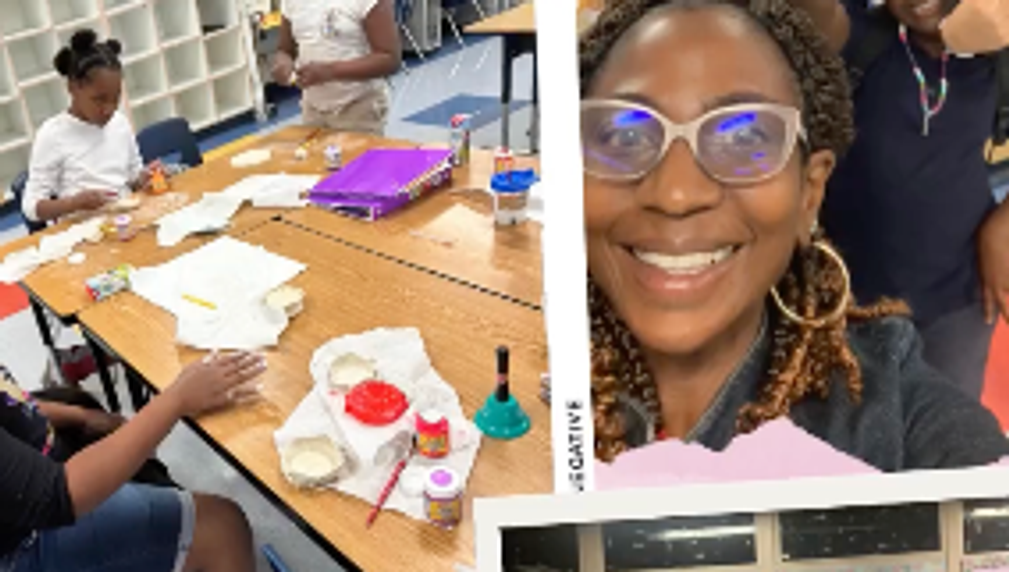Stay Healthy Girl Project
DoV Club's Stay Healthy Girl Program aims to educate youth girls between the ages of 10-14 about creating sustainable habits for a healthy and well-balanced lifestyle. Our workshops will implement topics such as the importance of hygiene, addressing health misinformation on social media, and mind mapping their values and beliefs as girls becoming healthy women. The project will ensure that participants build social support amongst each other as research shows it has positive physical and psychological affects (Gillman et al. 2023).

What is the primary issue area that your application will impact?
Social support networks
In what stage of innovation is this project, program, or initiative?
Expand existing project, program, or initiative (expanding and continuing ongoing, successful work)
What is your understanding of the issue that you are seeking to address?
The issue we will address through the Stay Healthy Girl Project are health disparities amongst girls of color which can have adverse effects over the life course. Research conveys that "Children of color experience substantially higher rates of adversity during childhood than their white peers, which can significantly impact [their] physical and mental health." (Leary, n.d.) Moreover, Leary (n.d.) states that girls of color are more likely to experience higher rates of trauma, become system-impacted, or face poverty. Nonetheless, when adverse childhood experiences are not met they can be linked to behaviors such as alcoholism, drug abuse, depression, suicide, poor physical health, and obesity (Sacks and Murphey, 2018). Moreover, the Stay Healthy Girl Project will be utilized as a primary prevention project that increases our participants awareness of adverse childhood experiences that may arise. However, we will educate our participants on how to navigate their adverse experiences.
Describe the project, program, or initiative this grant will support to address the issue.
This grant will support DoV Club's Stay Healthy Girl Project (SHGP) by providing us with the promotion, training, and financial resources to conduct the project. By receiving this grant our participants will have an increased access to health resources, hygiene kits, and field trips that will expose them to holistically healthy ways to prevent diseases and health issues from occurring. The (SHGP) will facilitate workshops for 16 weeks to girls of color between the ages of 10-14 residing in Service Planning Area 6 of Los Angeles County who are at risk of facing adverse childhood experiences (ACEs). SHGP's goal is to increase the protective factors of youth girls of color between the ages of 10-16 who are at risk for experiencing the long-term effects of ACEs. We will increase their protective factors by providing the participants with social support, teaching good hygiene habits, informing participants about the facts of female health, basics of nutrition, and disintegrating the misinformation of health facts posted on social media. Most importantly, SHGP will ensure that our participants will implement the sustainable habits they learn from our workshops which will be done through S.M.A.R.T. Goals. We intend on utilzing S.M.A.R.T. Goals to empower the girls to create one or two goals they will complete by October 2025.
Describe how Los Angeles County will be different if your work is successful.
One our participants complete our workshops they will be able to enact protective behaviors that bring forth resilience when experiencing adversity. However, though DoV Club breeds resilient girls through SHGP, we will ensure that participants have access to social support, hygiene products, exposure to healthy habits, and the knowledge to prevent diseases and mental illnesses. According Kids Data, 15.3% of youth have experienced one adverse childhood experience, approximately 74,540 of these youth are between the ages of 6-13 and identify as females. As SHGP aims to prevent the adverse effects of ACEs occurring we are also decreasing health disparities amongst women of color. Researchers Lam-Hine et al. (2023), discovered that "ACEs are associated with poor adulthood health, with individuals experiencing multiple ACEs at greatest risk". As ACEs are more common among females, SHGP will help decrease negative health disparities and life events among the target population (CDC, 2023).
What evidence do you have that this project, program, or initiative is or will be successful, and how will you define and measure success?
As SHGP is in its early stages, we operationalize the project as successful if we have 1) completes all the tasks listed in the implementation plan; 2) seeing an increase in participants social support; 3) increase in knowledge of adverse childhood experience occurring. We will create a detailed outline of our implementation plan to ensure that we use a community based participatory approach to support our participants. Moreover, to examine the increase of social support amongst our participants we will facilitate the Protective Factors Survey (PFS) to our participants created by the FRIENDS National Center for Community-Based Child Abuse Prevention. PFS measures social support, concrete support, nurturing and attachment, and family functioning/resiliency, but we will discard the child development/knowledge of parenting items. We will discard those items due to the demographics of our target population.
Approximately how many people will be impacted by this project, program, or initiative?
Direct Impact: 30.0
Indirect Impact: 75.0